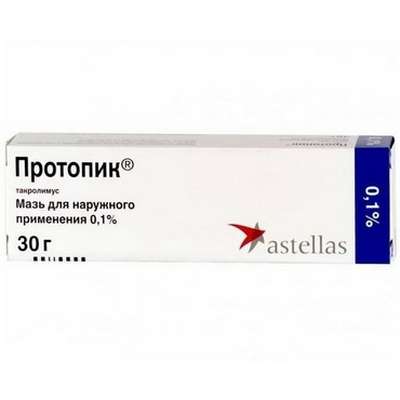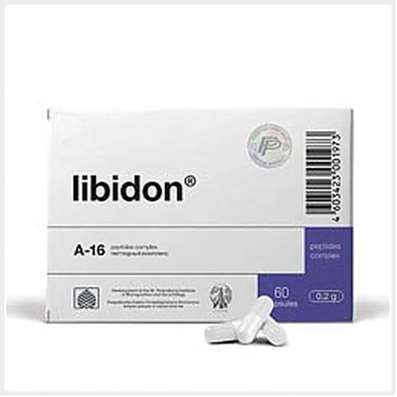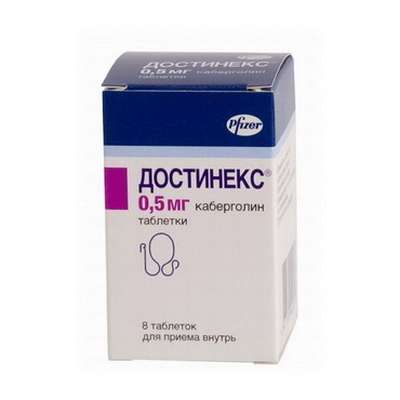Instruction for use: Azathioprine
I want this, give me price
Dosage form: Substance-powder; tablets
Active substance: Azathioprinum
ATX
L04AX01 Azathioprine
Pharmacological group:
Immunodepressants
The nosological classification (ICD-10)
D69.3 Idiopathic Thrombocytopenic Purpura: Werlhof's Disease; Idiopathic autoimmune thrombocytopenia; Idiopathic thrombocytopenic purpura of adults; Idiopathic thrombocytopenic purpura in adults; Immune idiopathic thrombocytopenic purpura; Immune thrombocytopenia; Bleeding in patients with thrombocytopenic purpura; Evans Syndrome; Thrombocytopenic purpura; Thrombocytopenia of immune origin; Chronic idiopathic thrombocytopenic purpura; Essential thrombocytopenia; Autoimmune thrombocytopenic purpura in pregnancy; Posttransfusion purpura
G70 Myasthenia gravis and other disorders of the neuromuscular synapse: Myasthenic syndrome; Myasthenic syndromes; Myasthenia gravis; Myasthenic syndrome; Severe myasthenia gravis (Myasthenia gravis)
K51 Ulcerative colitis: Colitis acute ulcerative; Colitis ulcerative; Ulcerative-necrotic colitis; Colitis ulcerative-hemorrhagic nonspecific; Colitis ulcerative and trophic; Colitis ulcerative idiopathic; Colitis ulcerative nonspecific; Nonspecific ulcerative colitis; Proctocolitis ulcers; Hemorrhagic purulent rectoxitis; Rectoccolitis ulcerative-hemorrhagic
K73.2 Chronic active hepatitis, not elsewhere classified: Chronic active hepatitis; Chronic hepatitis is aggressive; Chronic hepatitis active
L10 Pemphigus [pemphigus]: Benign pemphigoid of the mucous membranes; Bubble dermatosis; Pemphigus; Dermatitis, vesicular; Benign pemphigus; Ordinary pemphigus; Pemphigus; Bubble dermatitis; Family benign pemphigus Hailey-Hailey
L40 Psoriasis: Chronic plaque psoriasis with diffuse; generalized psoriasis; Psoriasis of the scalp; hairy parts of the skin; A generalized form of psoriasis; Psoriazoformny dermatitis; Psoriasis complicated with erythroderma; disabling psoriasis; Isolated psoriatic plaque; Eksfolliativny psoriasis; psoriatic erythroderma; Psoriasis with eczematization; Hyperkeratosis in psoriasis; Inverse psoriasis; Psoriasis ekzemopodobnye; dermatoses psoriazoformny; Psoriasis genitals; Psoriasis lesions with hairy areas of the skin; erythrodermic psoriasis; Chronic psoriasis of the scalp; Chronic psoriasis; ordinary psoriasis; refractory psoriasis; Koebner phenomenon; psoriasis
M06.9 Rheumatoid arthritis, unspecified: Rheumatoid arthritis; Pain syndrome in rheumatic diseases; Pain in rheumatoid arthritis; Inflammation in rheumatoid arthritis; Degenerative forms of rheumatoid arthritis; Children's rheumatoid arthritis; Exacerbation of rheumatoid arthritis; Acute articular rheumatism; Rheumatic arthritis; Rheumatic polyarthritis; Rheumatoid arthritis; Rheumatic polyarthritis; Rheumatoid arthritis; Rheumatoid arthritis; Rheumatoid arthritis of active course; Rheumatoid periarthritis; Rheumatoid polyarthritis; Acute rheumatoid arthritis; Acute rheumatism
M30 Nodular polyarteritis and related conditions
M32 Systemic lupus erythematosus: Lupus erythematosus red disseminated; Disseminated lupus erythematosus; Chronic lupus erythematosus
M33 Dermatopoly myositis: Dermatomyositis; Wagner's disease; Wagner-Unferricht-Hepp Syndrome; Systemic dermatomyositis; Sclerodermatomyositis
N05 Unspecified nephritic syndrome: Kidney infections; Glomerulonephritis; Glomerulosclerosis; Idiopathic nephritis; Immune kidney disease; Immune kidney diseases cytotoxic; Immune glomerulopathies; Mesangial proliferative glomerulonephritis; Membrane-proliferative glomerulonephritis; Membranous glomerulonephritis; Nephritis; Jade; Postinfectious glomerulonephritis; Post-streptococcal glomerulonephritis; Segmental glomerulosclerosis
T86.9 Dying and rejection of transplant (s) organ and tissue, unspecified: Rejection reaction; Rejection reaction during organ transplantation; Graft-versus-host response; GVHD; Transplant rejection reactions
Composition and release form
Tablets - 1 table.
Azathioprine 0.05 g
Auxiliary substances: gelatin; potato starch; Milk sugar; Calcium stearate
In a planar cell pack of 10; In a pack of cardboard 5 packages.
Description of dosage form
Tablets are light yellow or light yellow with a greenish tint of color.
Characteristic
Immunosuppressant from the group of antimetabolites.
Pharmachologic effect
Mode of action - Immunosuppressive.
Pharmacodynamics
As a structural analogue of adenine, hypoxanthine and guanine, which are part of nucleic acids, azathioprine blocks the cell division and proliferation of tissues.
The immunosuppressive effect of azathioprine is mainly directed to delayed hypersensitivity reactions and cellular cytotoxicity. Suppresses the reaction of tissue incompatibility. To a lesser extent it acts on the synthesis of antibodies. Compared with mercaptopurine has a more pronounced immunosuppressive effect with less cytostatic activity.
Pharmacokinetics
After oral administration, azathioprine is well absorbed from the digestive tract. Binding to proteins is low (~ 30%). In the body, biotransformed with the formation of 6-mercaptopurine and 6-thioinosinic acid (active metabolites). The active substance penetrates into the tissue in a small concentration; The smallest amount of azathioprine is found in the brain. T1 / 2 for azathioprine and its active metabolites - about 5 hours Cmax in blood plasma is achieved 1-2 hours after ingestion. It is excreted almost completely through the liver with bile, through the kidneys - no more than 1-2%.
Indication of the drug Azathioprine
Prevention of graft rejection reaction (as part of combination therapy);
rheumatoid arthritis;
Chronic active hepatitis;
Systemic lupus erythematosus;
nonspecific ulcerative colitis;
Dermatomyositis;
Myasthenia gravis;
Nodular periarteritis;
Vulgar pemphigus;
Autoimmune glomerulonephritis;
Idiopathic thrombocytopenic purpura;
psoriasis.
Contraindications
Hypersensitivity to azathioprine and / or mercaptopurine;
pregnancy.
Application of pregnancy and breastfeeding
Contraindicated in pregnancy. If necessary, use during lactation should stop breastfeeding.
Side effects
Myelodepression (leukopenia, thrombocytopenia, anemia), development of secondary infections, megaloblastic erythropoiesis and macrocytosis, nausea, vomiting, anorexia, skin rash, arthralgia, myalgia, erosive ulcerous lesions of the mouth and lips, drug allergy, cholestatic hepatitis, toxic hepatitis. Transplant recipients may have pancreatitis, erosive and ulcerative lesions and bleeding from the gastrointestinal tract, necrosis and intestinal perforation. There are isolated reports of the development of acute renal failure, hemolytic anemia, acute lung diseases, meningeal reactions. In experimental studies, teratogenic, embryotoxic and carcinogenic effects were established. Patients may develop malignant neoplasms.
Interaction
With simultaneous application with allopurinol, the toxic effect of azathioprine is enhanced; With co-trimoxazole - may increase the myelotoxic effect of azathioprine; With ACE inhibitors - development of severe leukopenia is possible; With other immunosuppressants (corticosteroids, cyclosporine, anti-CD3 antibodies, etc.) - the risk of infection and the onset of tumors increases.
Azathioprine is an antagonist of nondepolarizing muscle relaxants.
When vaccinated with live viral vaccines concomitantly with the administration of azathioprine, viral replication may be enhanced, inactivated vaccines - inhibition of antibody production.
Dosing and Administration
Inside. The dose is set individually, taking into account the indications, the severity of the course of the disease, the dosage of concomitantly prescribed drugs. To prevent the reaction, rejection of the graft is used in complex therapy (usually together with cyclosporine and corticosteroids) a shock dose of up to 5 mg / kg orally in 2-3 doses for 1-2 months. Then, maintenance therapy is prescribed from 1 to 4 mg / kg orally for a long time (several years). With the withdrawal of the drug, the dose should be reduced gradually. In case of signs of rejection of the transplant, the daily dose is again raised to 4 mg / kg.
With other diseases - usually 1.5-2 mg / kg per day in 3-4 divided doses. If necessary, the daily dose can be increased to 200-250 mg in 2-4 doses. The duration of the course of treatment is set individually.
With rheumatoid arthritis - 1-2.5 mg / kg / day in 1-2 divided doses. The course of treatment is not less than 12 weeks. The maintenance dose is 0.5 mg / kg once a day.
In chronic active hepatitis, the daily dose is 1-1.5 mg / kg.
Overdose
Symptoms: dyspeptic phenomena, pancytopenia, impaired liver function (increased concentration of bilirubin and transaminases in blood plasma), increased other side effects (see "Side effects").
Treatment: symptomatic, hemodialysis.
When hemodialysis, azathioprine is not completely eliminated.
Precautionary measures
During the treatment period, women of childbearing age should use reliable methods of contraception.
Special instructions
During the first 8 weeks of treatment, weekly monitoring of the peripheral blood pattern is shown (1-2 times a month later), as well as periodic monitoring of serum hepatic transaminases, alkaline phosphatase and bilirubin levels.
For violations of kidney and / or liver function, as well as with the simultaneous administration of allopurinol, azathioprine should be used at lower doses (1/4 of the average dose). With caution (taking into account the benefit / risk ratio) apply with chicken pox, herpes zoster, xanthine oxidase deficiency; Radiation and cytotoxic therapy.
Conditions of supply of pharmacies
On prescription.
Storage conditions of the drug Azathioprine
In the dark place.
Keep out of the reach of children.
Shelf life of the drug Azathioprine
5 years.
Do not use after the expiry date printed on the package.

 Cart
Cart





